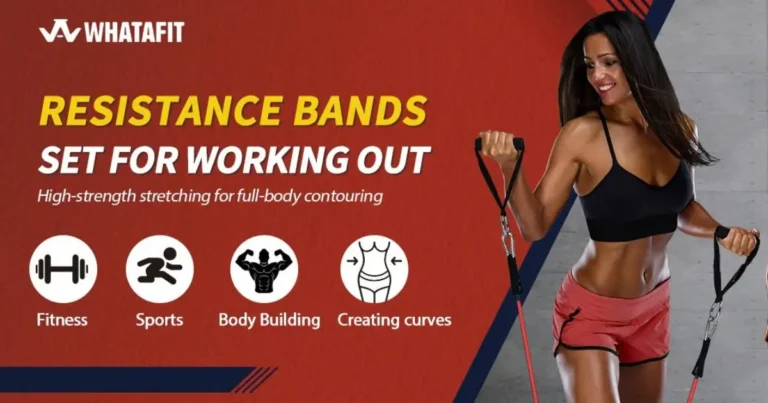The Ultimate Kettlebell Workout Guide: Build Strength, Power & Endurance
Kettlebells aren’t just another gym implement—they’re a versatile, dynamic tool that blends strength training, conditioning, and functional movement into one seamless package. A well-rounded kettlebell workout program develops ballistic power, enhances grip strength, and delivers full-body integration in a time-efficient format.
Whether you’re a beginner mastering the dead-simple swing or an intermediate lifter chasing complex Turkish get-ups, this guide equips you with everything you need: choosing the right weight, nailing foundational techniques, and following structured routines tailored for strength, conditioning, and more.
What You’ll Learn:
- How to select your first kettlebell & stay safe
- Perfect technique for the six core moves
- Sample routines for beginners, strength, and fat loss
- Programming strategies & progression tips
- Warm-up, cool-down, and common FAQs
Table of Contents
Kettlebell Essentials: Choosing Your Weight & Safety First!

Choosing the Right Kettlebell Weight
Picking the correct kettlebell sets you up for success. Factors include exercise type, experience level, and individual strength.
| Exercise | Men (kg/lb) | Women (kg/lb) |
|---|---|---|
| Two-Handed Swing | 16 kg (35 lb) | 8–12 kg (18–26 lb) |
| Goblet Squat / Press | 12 kg (26 lb) | 6–8 kg (13–18 lb) |
| Turkish Get-Up / Snatch | 12 kg (26 lb) | 6 kg (13 lb) |
Pro tip: Start one size lighter than recommended—perfecting form outweighs lifting heavier.
Kettlebell Safety is Paramount
- Master the Hip Hinge: Your foundation for swings and cleans—hips back, spine neutral.
- Neutral Spine: Keep a straight back during ballistics to protect your lumbar.
- Grip Technique: Use a hook grip with relaxed fingers; avoid death gripping that fatigues forearms.
- Footwear & Space: Opt for flat soles or train barefoot. Clear at least a 6×6 ft area.
- Respect the Weight: Progress slowly—build mobility and stability before adding load.
Master the Foundational Kettlebell Exercises (The Core Six)
These six moves form the backbone of any kettlebell workout for strength. Focus on impeccable form, breathing, and progression.
Kettlebell Two-Handed Swing
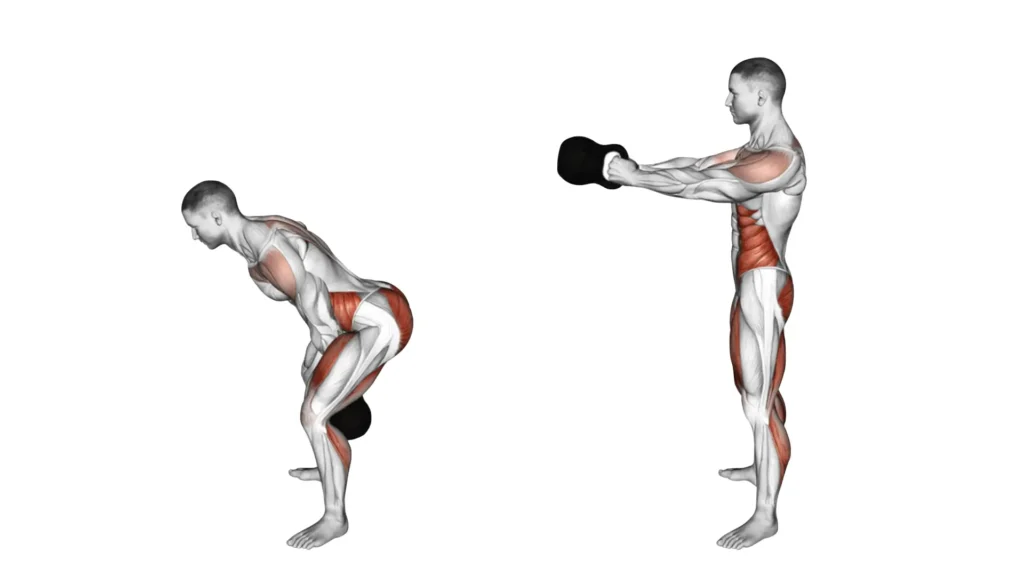
Why It’s Foundational: Develops ballistic hip power, posterior chain, and conditioning.
Steps:
- Hinge at hips, soft knees, kettlebell between feet.
- Swing back, then explode hips forward, driving the bell to chest height.
- Maintain tension—no shoulder lift.
Breathing: Exhale sharply at the top.
Common Mistakes & Fixes: Squatting instead of hinging—push hips back. Using arms—focus on hip drive.
Regression/Progression: Start with half-swings; progress to single-arm swings.
Kettlebell Goblet Squat
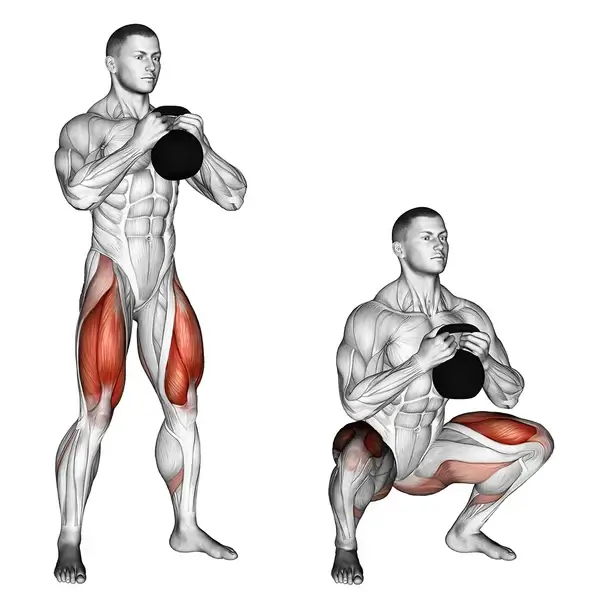
Benefits: Teaches upright posture, strengthens quads, glutes, core.
Steps: Hold bell at chest, squat deep with knees tracking toes, chest tall.
Common Mistakes: Leaning forward—brace core, keep elbows inside knees.
Breathing: Inhale descending, exhale driving up.
Prog: Move to front squat with two kettlebells.
Turkish Get-Up (TGU)
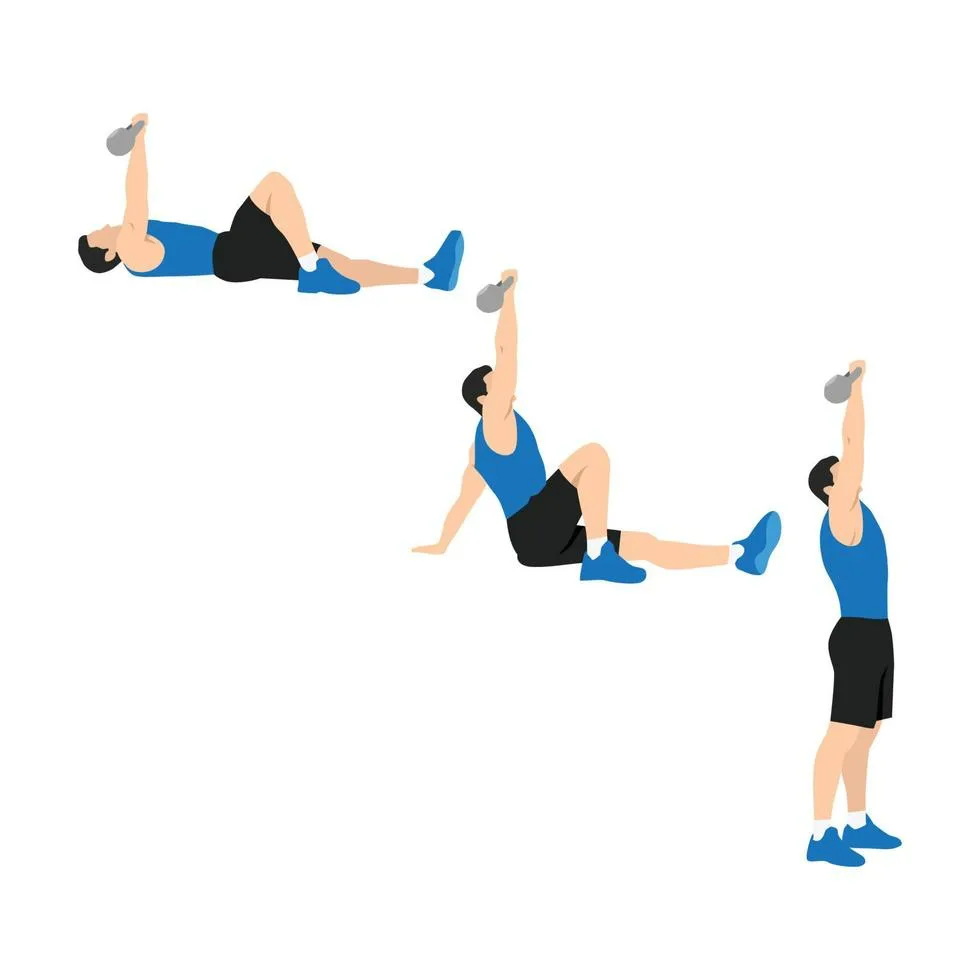
Benefits: Full-body stability, shoulder integrity, core bracing.
Steps: Break into distinct phases—roll to elbow, up to hand, bridge hips, sweep leg, stand, reverse.
Common Errors: Rushing transitions—pause and stabilize.
Breathing: Inhale before lift, exhale through each phase.
Prog: Use lighter bell or skip windmill start.
Kettlebell Clean
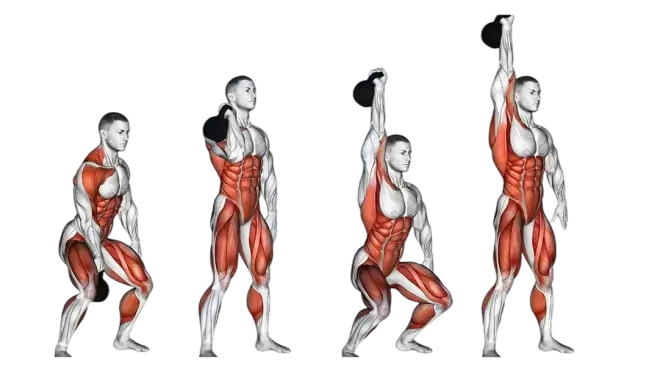
Benefits: Teaches clean rack position, hip drive, and timing.
Steps: Swing bell, guide to rack position by flipping into palm, elbows close.
Mistakes: Striking wrist—pull elbow up, let bell float.
Breathing: Exhale at rack.
Prog: Double clean or clean-to-squat.
Kettlebell Single-Arm Press
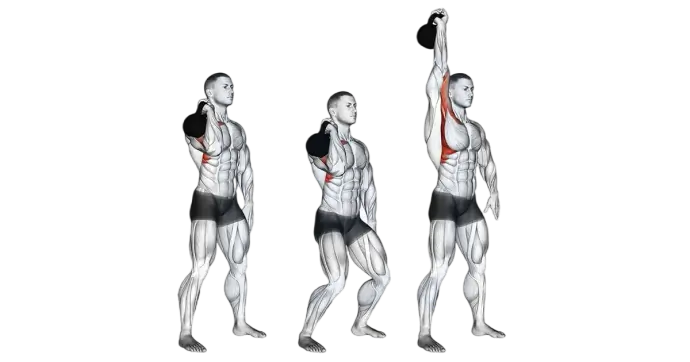
Benefits: Overhead strength, shoulder stability, core anti-rotation.
Steps: Rack position, press overhead locking out elbow, bracing opposite side.
Mistakes: Leaning—tighten glutes, engage obliques.
Breathing: Exhale pressing up.
Prog: Push press or jerk.
Kettlebell Bent-Over Row
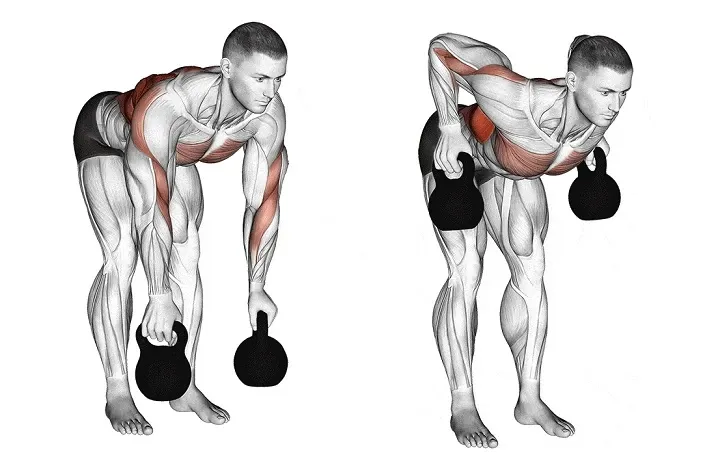
Benefits: Upper-back development, anti-flexion core work.
Steps: Hinge forward, row bell to hip, squeeze shoulder blade.
Mistakes: Shrugging—pull elbow back, keep shoulders down.
Breathing: Exhale pulling.
Prog: Single-arm, eccentric focus.
Kettlebell Workout Routines for Different Goals & Levels
Beginner Full-Body Kettlebell Workout
Frequency: 2–3×/week
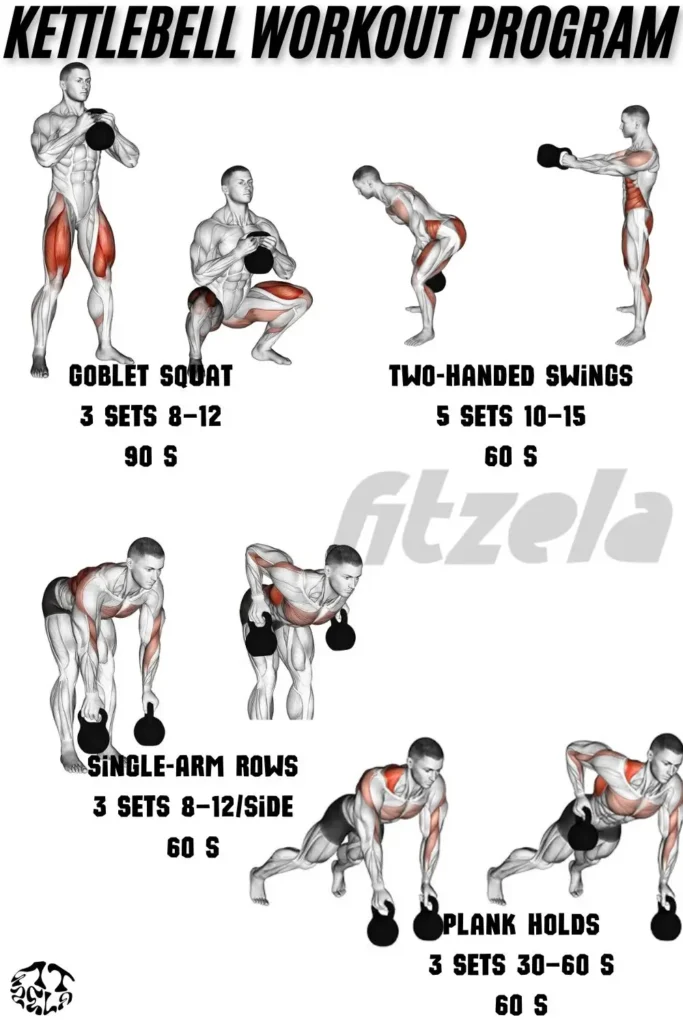
| Exercise | Sets | Reps | Rest |
| Goblet Squat | 3 | 8–12 | 90 s |
| Two-Handed Swings | 5 | 10–15 | 60 s |
| Single-Arm Rows | 3 | 8–12/side | 60 s |
| Plank Holds | 3 | 30–60 s | 60 s |
Kettlebell Workout for Strength
Frequency: 2–3×/week
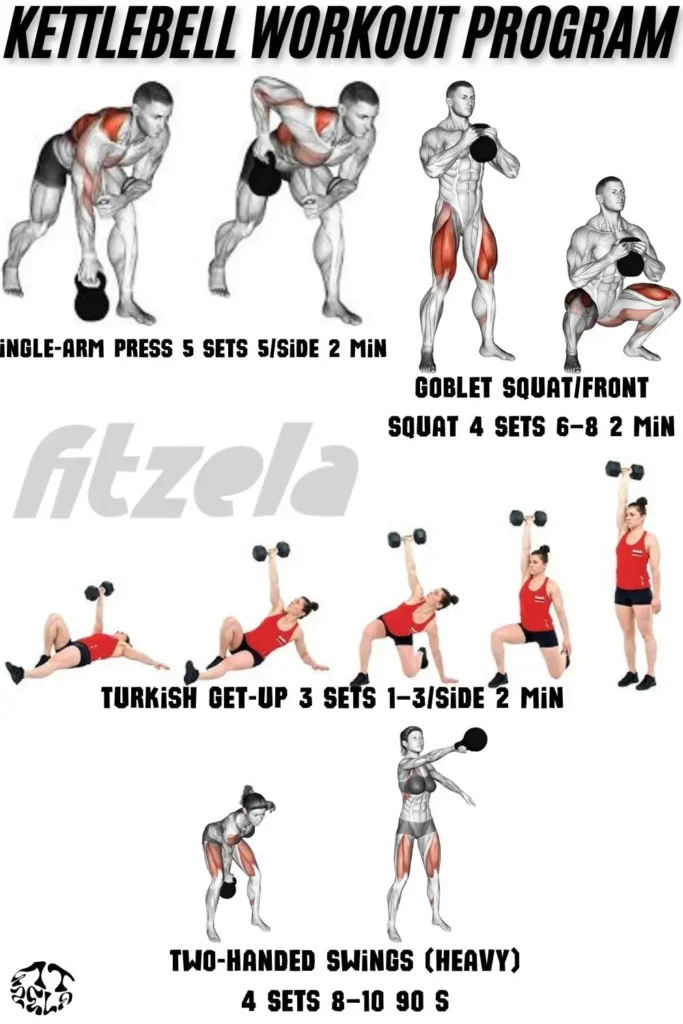
| Exercise | Sets | Reps | Rest |
| Single-Arm Press | 5 | 5/side | 2 min |
| Goblet Squat/Front Squat | 4 | 6–8 | 2 min |
| Turkish Get-Up | 3 | 1–3/side | 2 min |
| Two-Handed Swings (heavy) | 4 | 8–10 | 90 s |
Kettlebell Workout for Fat Loss & Conditioning
Frequency: 2–4×/week Circuit (3–5 rounds):
- KB Swings ×15

- Goblet Squats ×10
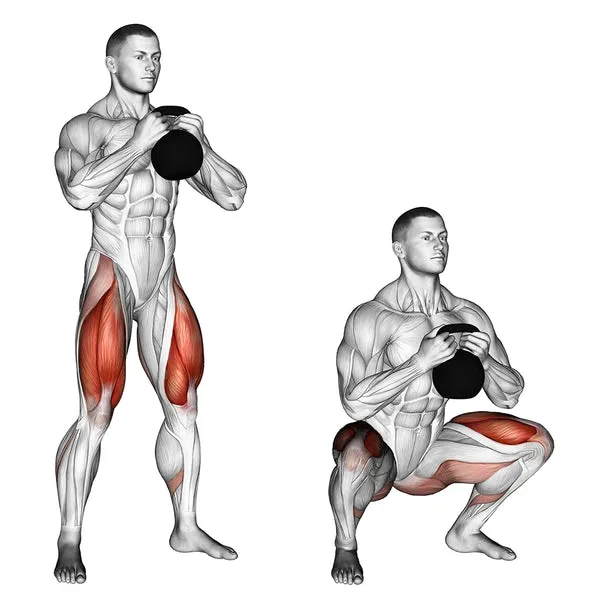
- Push-ups ×AMRAP
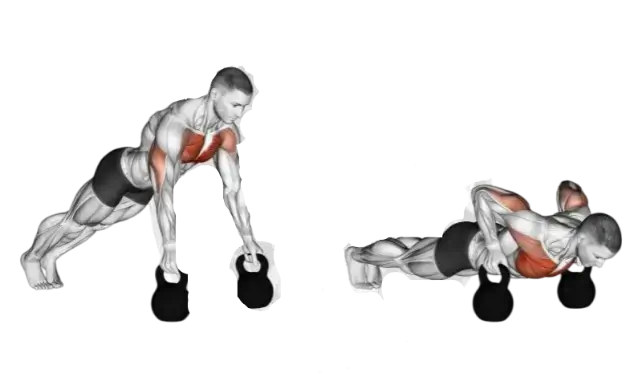
- KB Rows ×10/side
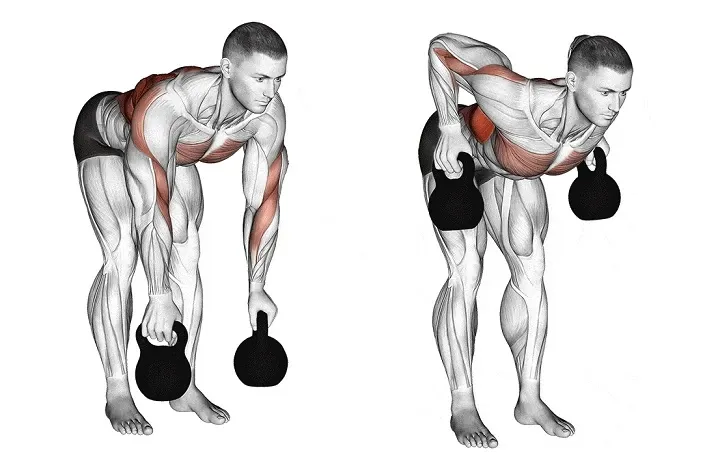
- Rest 60–90 s
EMOM 10:
- Odd: 15 KB Swings
- Even: 8 Goblet Squats
Programming Your Kettlebell Workouts
- Weekly Layout: 3 full-body days or upper/lower split including KB work.
- Rest & Recovery: At least 48 h between heavy sessions; active recovery on off days.
- Progressive Overload: Increase weight, reps, sets, or density—shorten rest, add complex variations.
Essential Kettlebell Warm-Up & Cool-Down
Warm-Up (5–7 min)
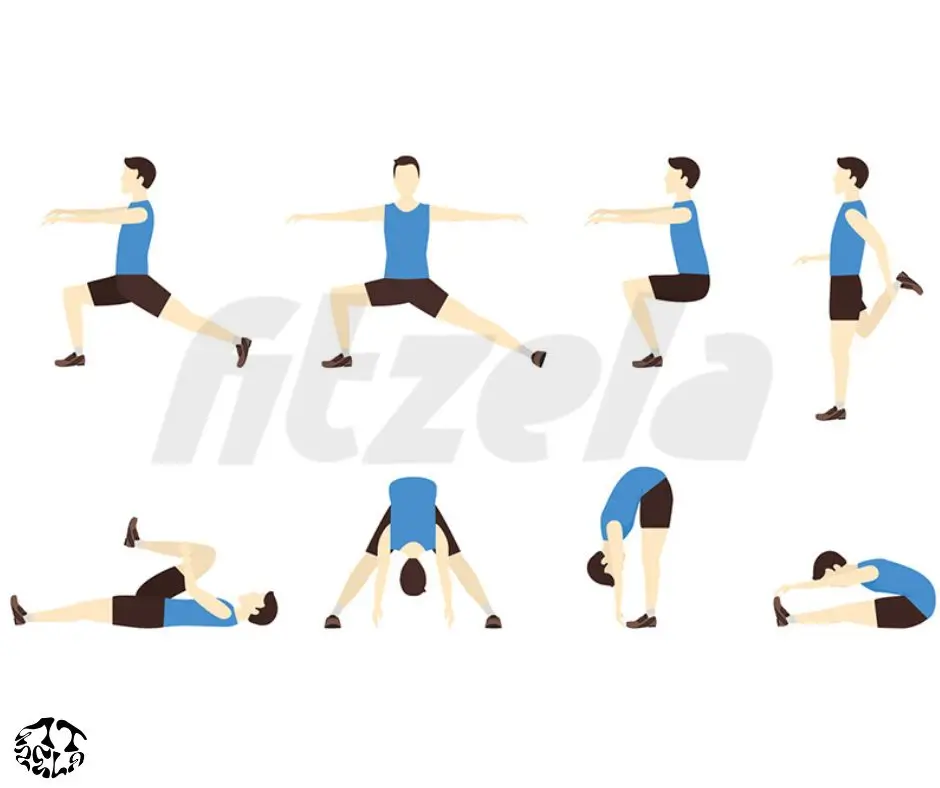
- Hip Hinge Drills (3×5)
- Leg Swings (1 min)
- KB Halos (light weight, 2×8 each)
- Thoracic Rotations (2×8)
- Glute Bridges (2×10)
Cool-Down & Stretching (5 min)
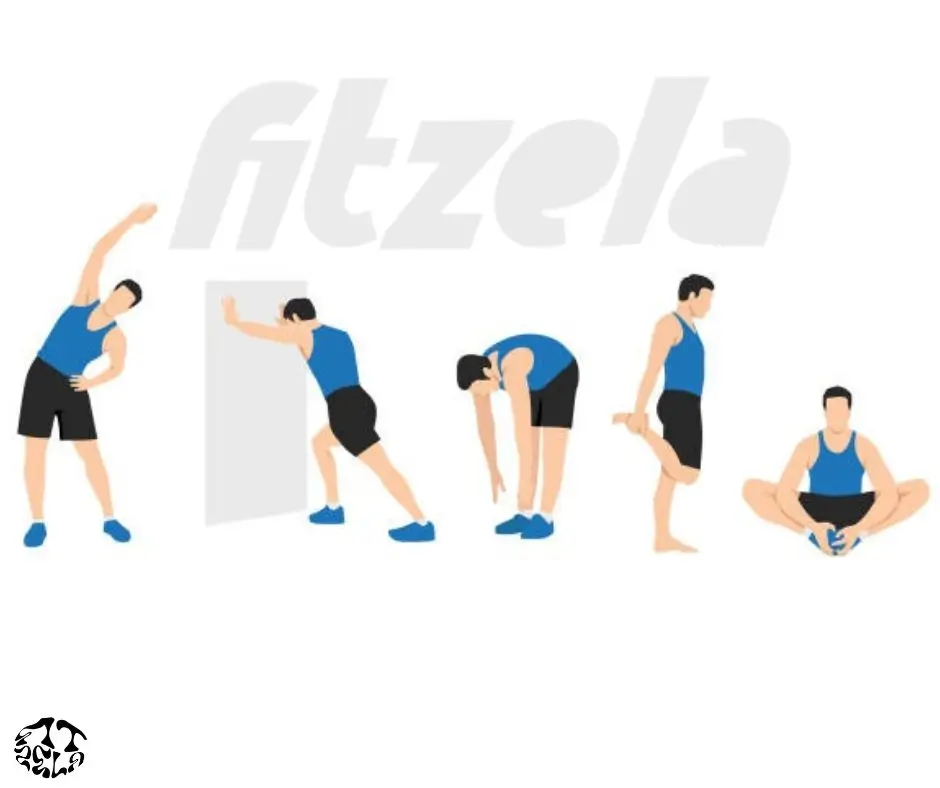
- Hamstring Stretch
- Hip Flexor Lunge Stretch
- Chest Opener on Wall
- Shoulder Thread-the-Needle
- Forearm Stretch
Frequently Asked Questions (FAQ)
What kettlebell weight should I start with? Refer to our weight chart and begin lighter to perfect form.
Can I build muscle with kettlebells? Absolutely—with proper volume, intensity, and progressive overload.
Are kettlebells good for weight loss? Yes—high-intensity swings and complexes torch calories; diet remains crucial.
How often should I do kettlebell workouts? 2–4 times per week based on your goals and recovery capacity.
Is the kettlebell swing safe for my back? Yes—if you master the hip hinge and maintain a neutral spine throughout.
Kettlebell Swing vs. Deadlift? Swings emphasize power and conditioning, while deadlifts focus more on maximum strength and lower reps.
Can I just do kettlebell swings? Swings are powerful but a balanced routine prevents imbalances and keeps progress steady.
Conclusion: Unlock Your Potential with Kettlebell Training
A kettlebell workout delivers unmatched power, stability, and metabolic conditioning in one package. Start smart—prioritize safety, master the core six, and commit to consistent progression. Download our Beginner Kettlebell Workout Sheet, choose your routine, and swing into strength today!






